Palmyra – Temple of Baal-Shamin تدمر – معبد بعلشمين
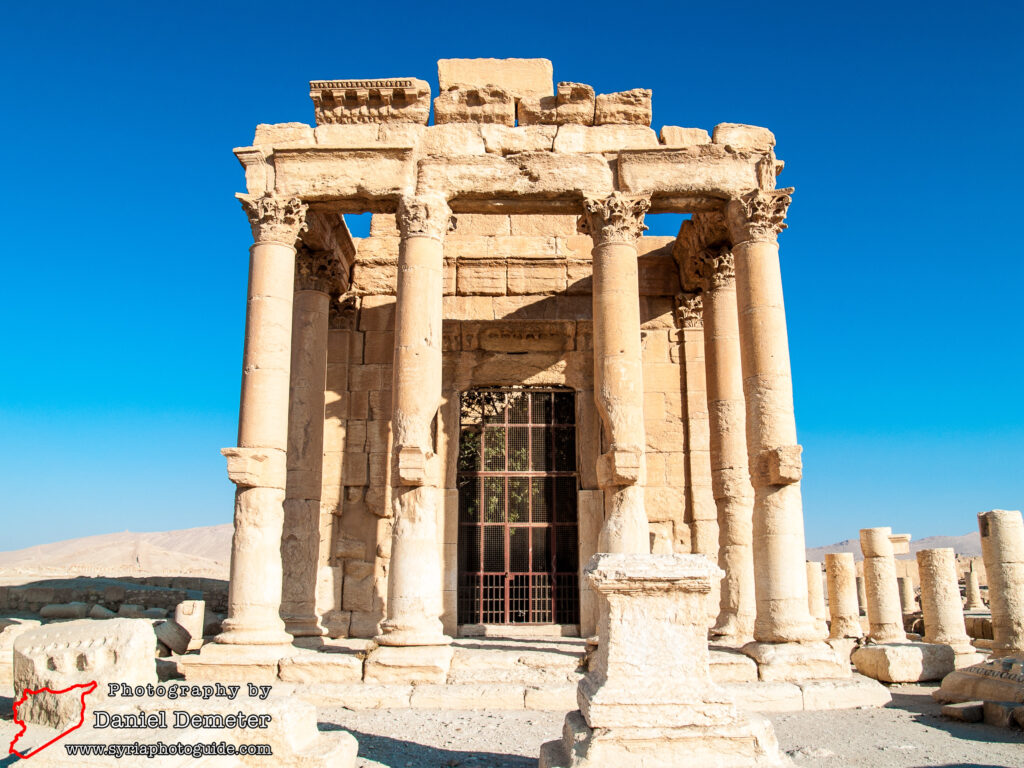
The Temple of Baal-Shamin (معبد بعلشمين) is one of the most well-preserved temples in the ancient city of Palmyra (تدمر). In Semitic tradition, Baal-Shamin was the “Lord of the Heavens”, responsible for rain and harvest and often equated with the Greek Zeus. Located in the far north of the acropolis, portions of the temple complex date back as early as 17 CE, with numerous phases of construction in subsequent centuries. The temple was excavated and reconstructed by a Swiss archaeological team in the 1950s.
The inner temple, or cella, has been restored to remarkable condition. This part of the complex dates to 130 CE, immediately after Emperor Hadrian’s visit to the city the year before. An inscription credits a local merchant, Male Agrippa, with financing both the temple’s construction and Hadrian’s visit to the city. The cella is preceded by a six-columned portico, the front four columns featuring small platforms that would have originally supported statues. The capitals, as well as pilasters decorating the side walls, are of the Corinthian order. The interior, while generally kept locked, can be viewed through the metal gate. The shrine features a central semicircular recess, or exedra, flanked by fluted double columns and side chambers. In front of the entrance is an alter dating to 113 CE. The temple was converted to a church in the fifth century.
Colonnaded courtyards border the inner temple to the northeast and southwest. The northeastern courtyard dates back to the earliest phase of construction, and is roughly twice the size of the southwestern courtyard. Most of the columns in this courtyard follow classical Corinthian style. The western columns, however, date to improvements under Odaenathus in the second half of the third century. These feature capitals that are highly stylized and demonstrate Egyptian influences. The smaller southwestern courtyard was dated by inscription to 149 CE. In the vicinity of the temple are the remains of several other buildings, though most are poorly preserved. Northwest of the temple are the remains of a Christian basilica, its design typical of the sixth century. Another smaller basilica is found a short distance southwest of the first. Other remains in the area are mostly residential.
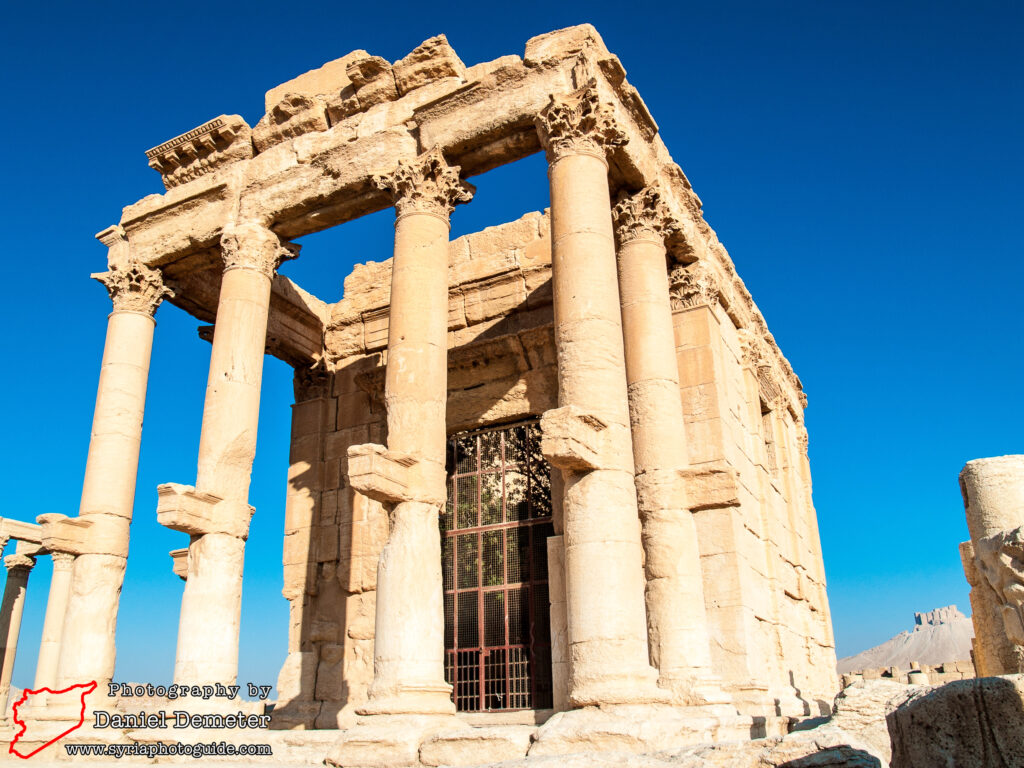
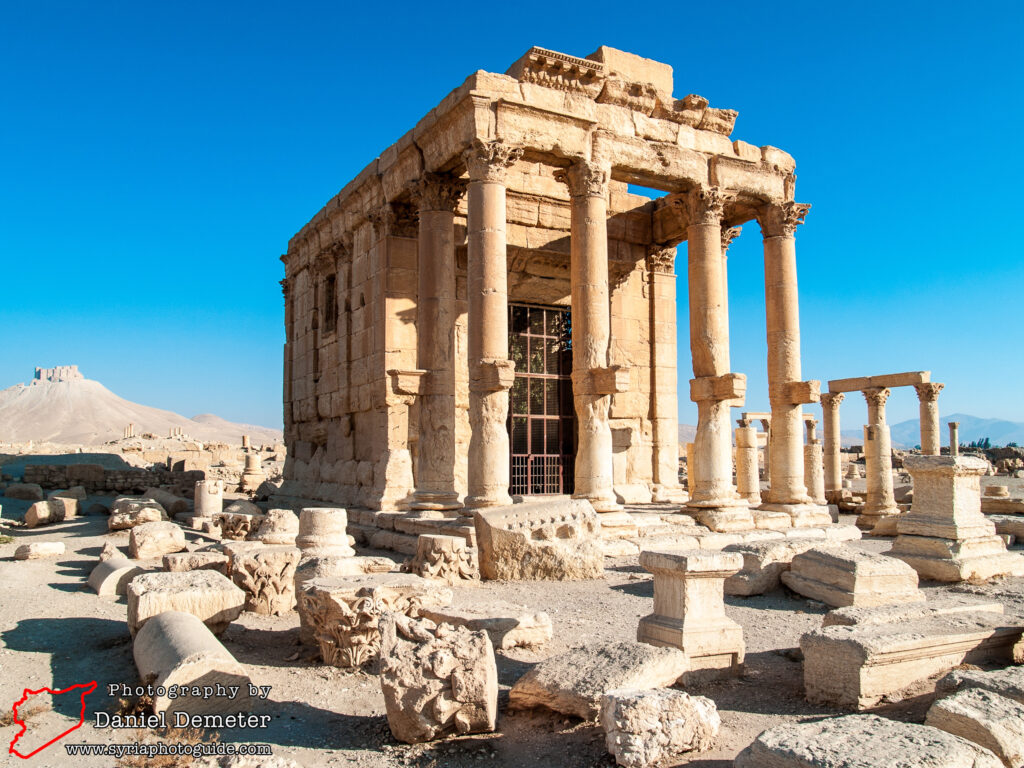
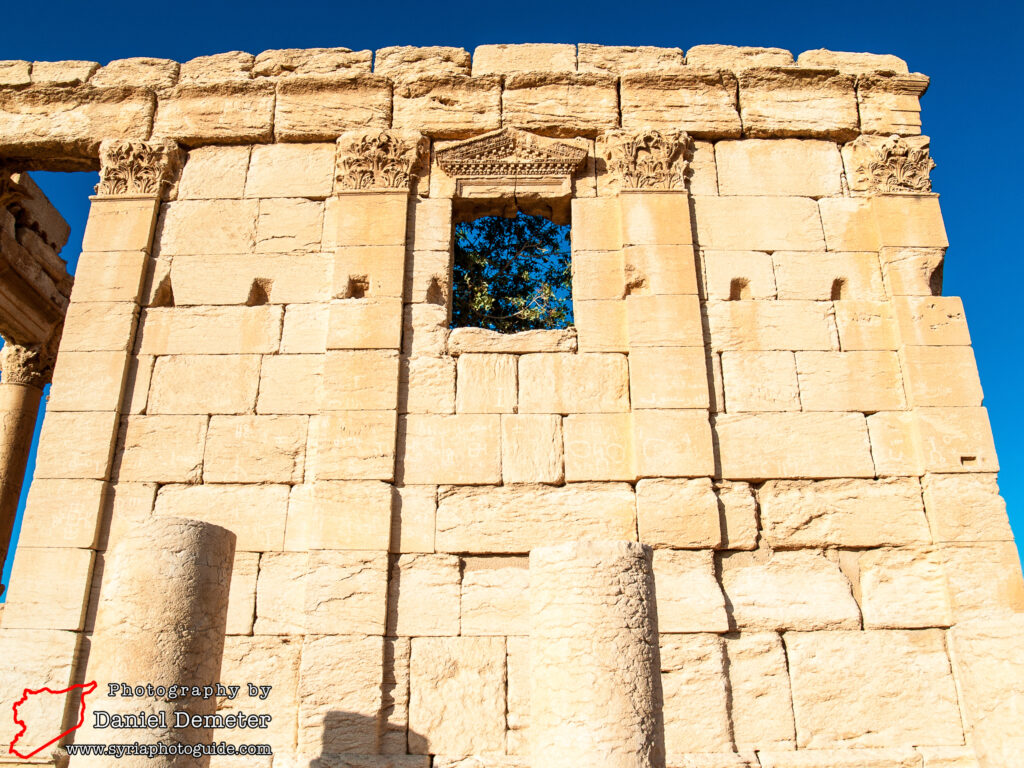
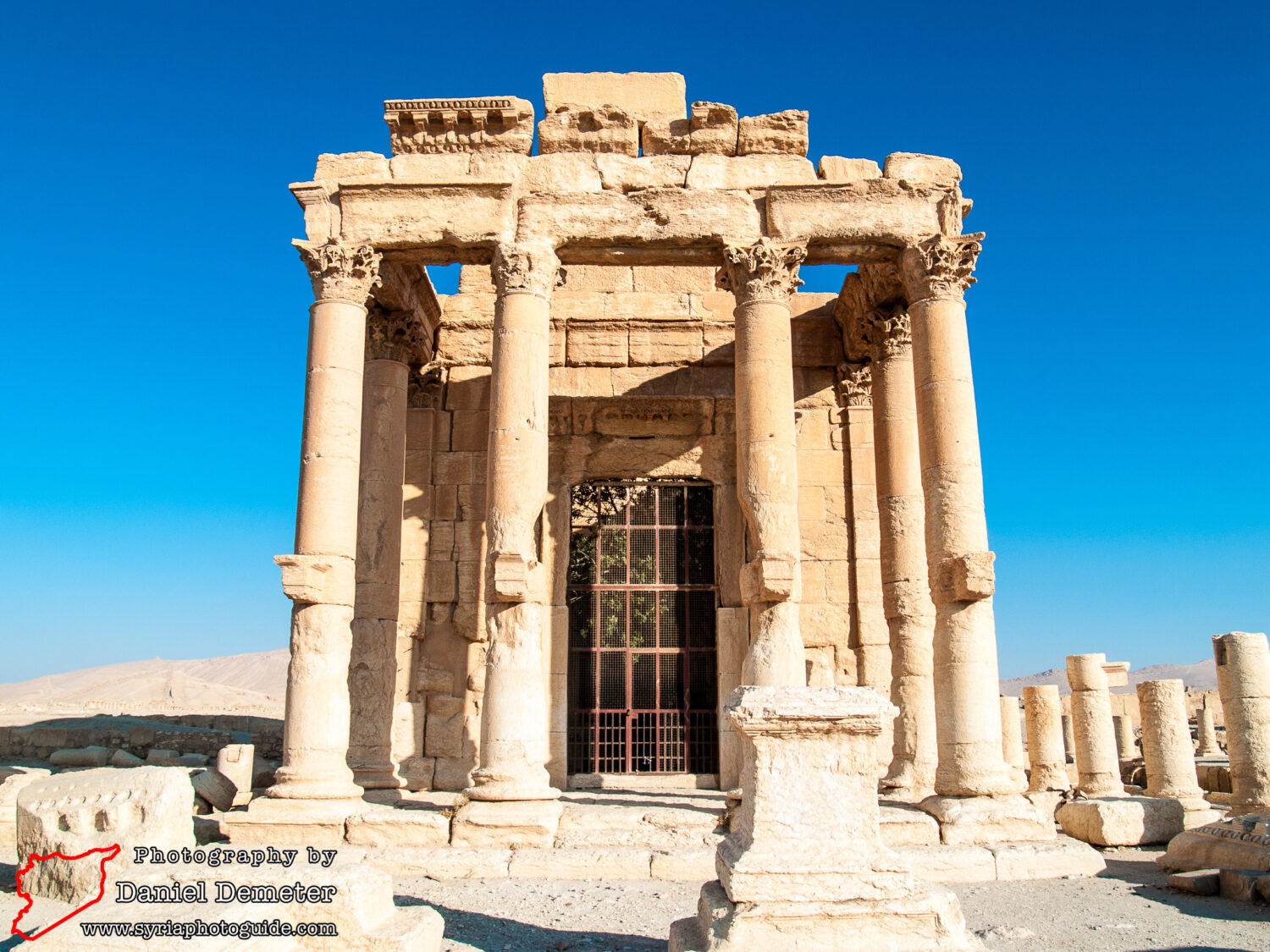
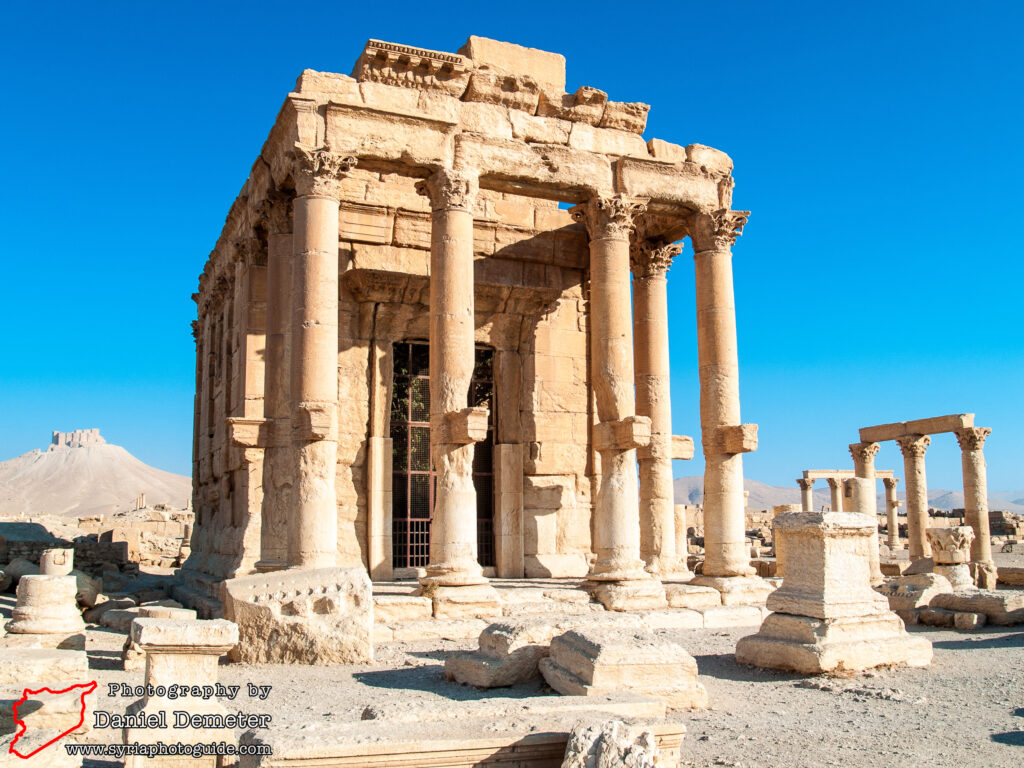
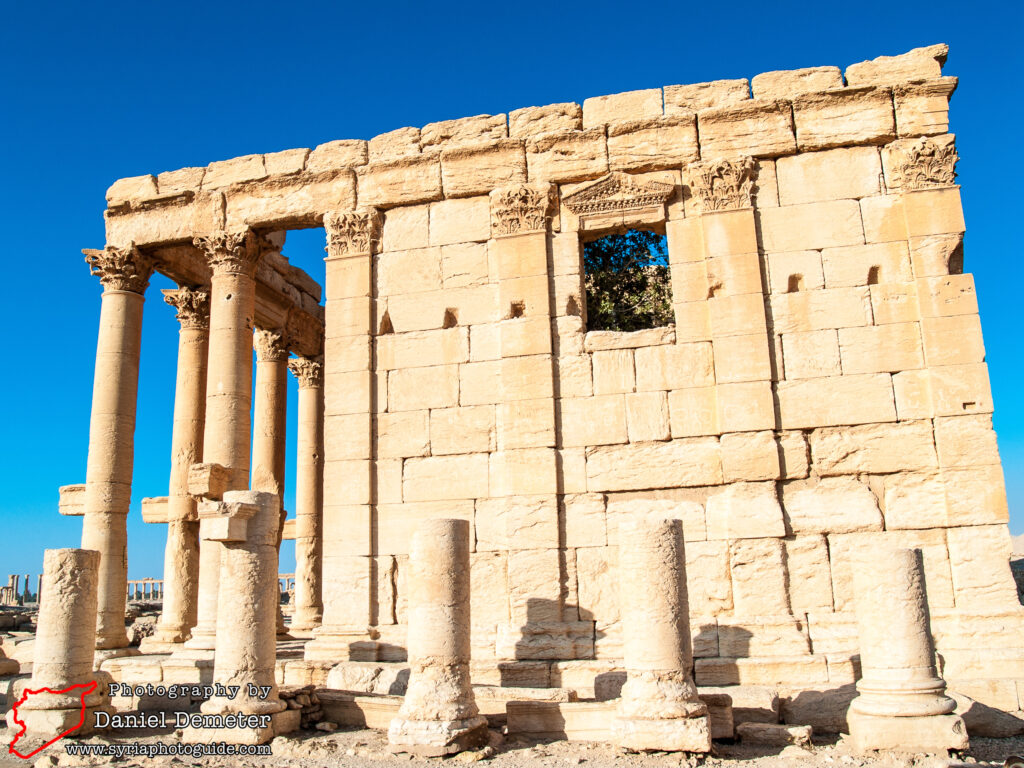
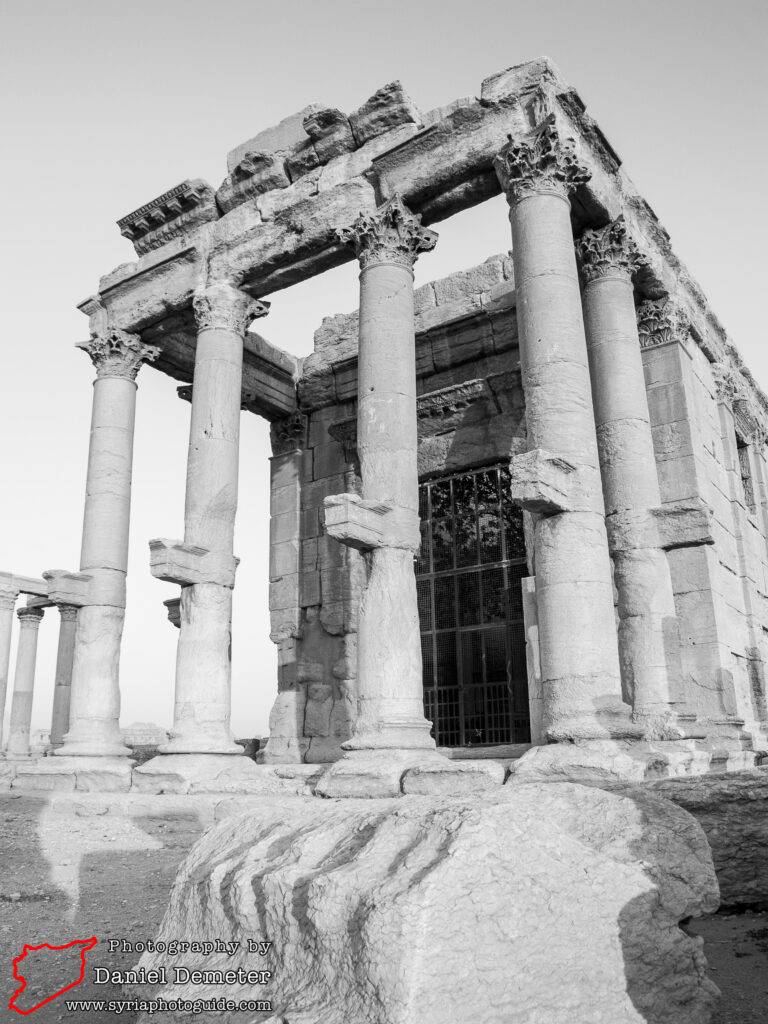
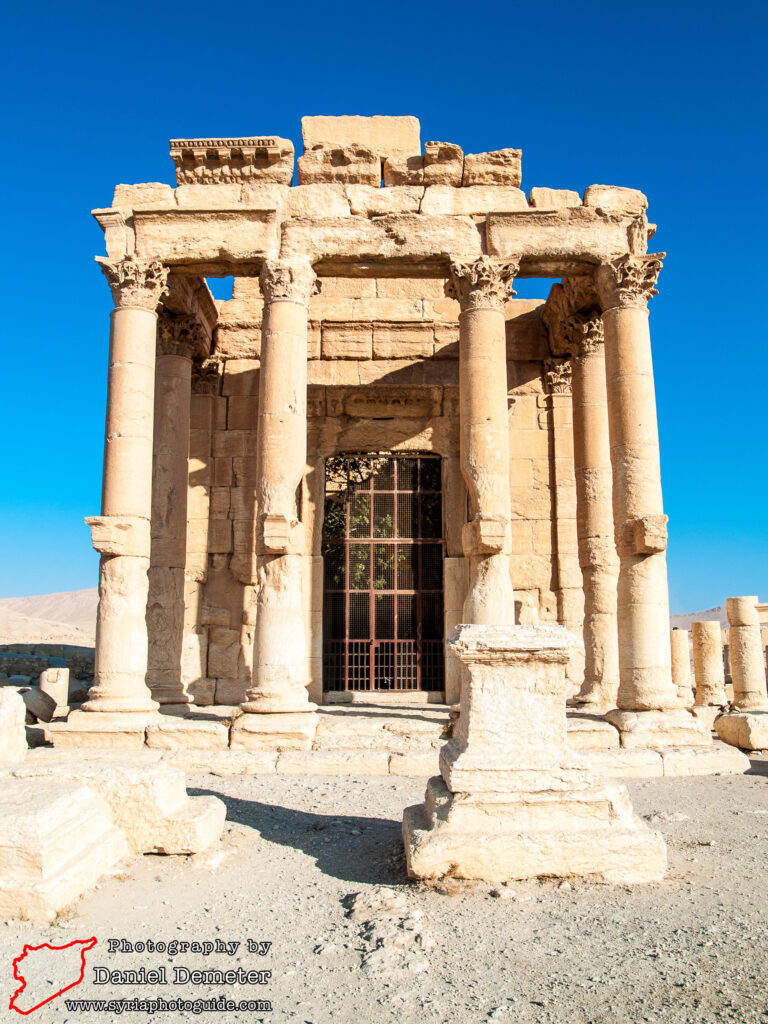
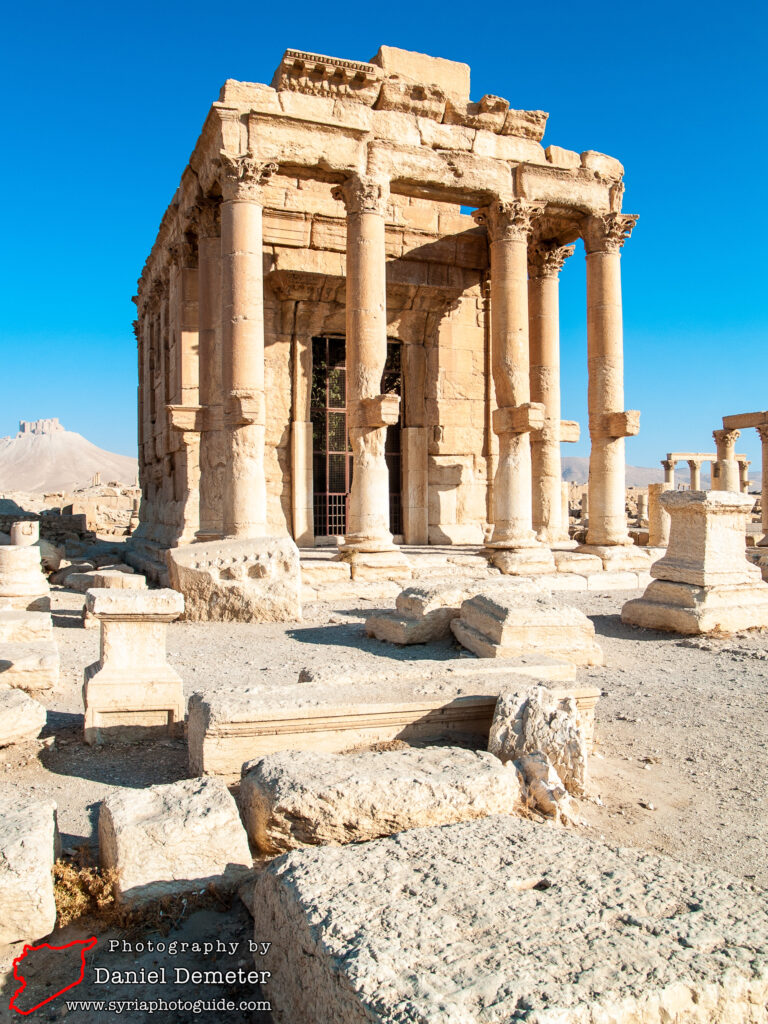
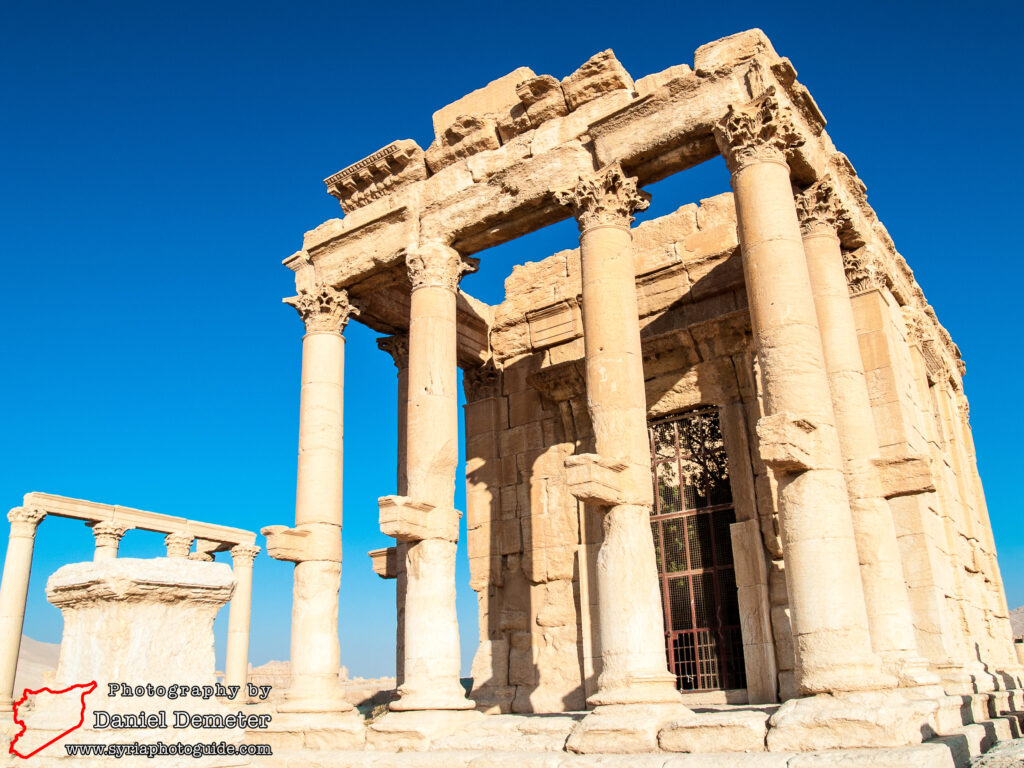
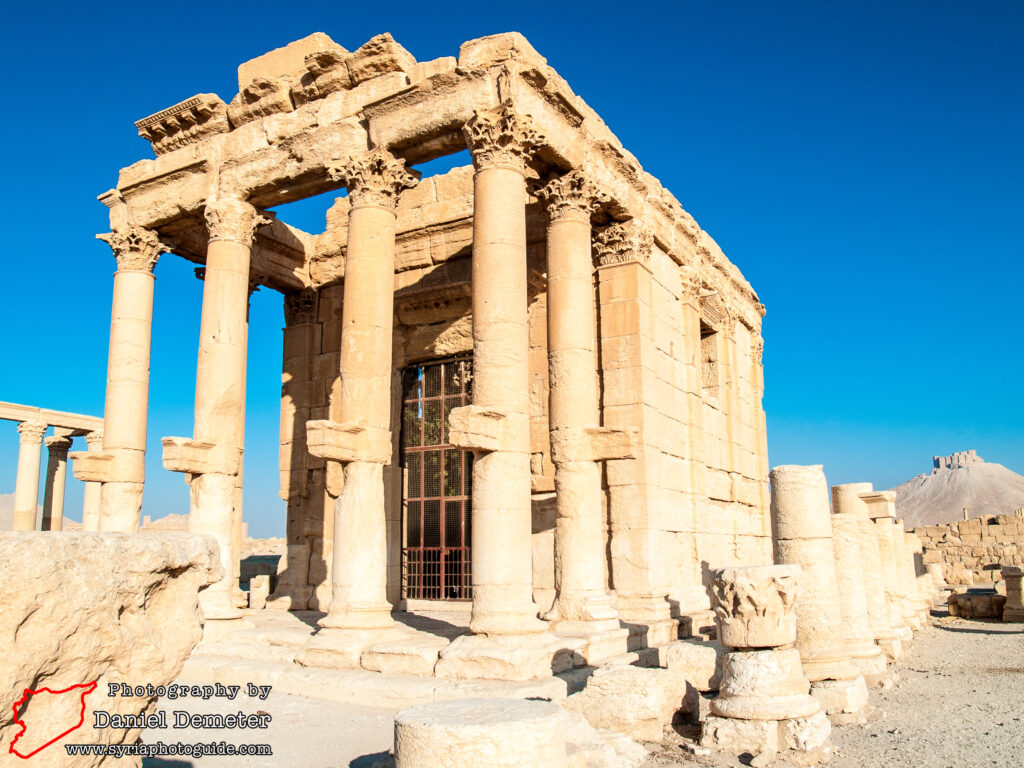
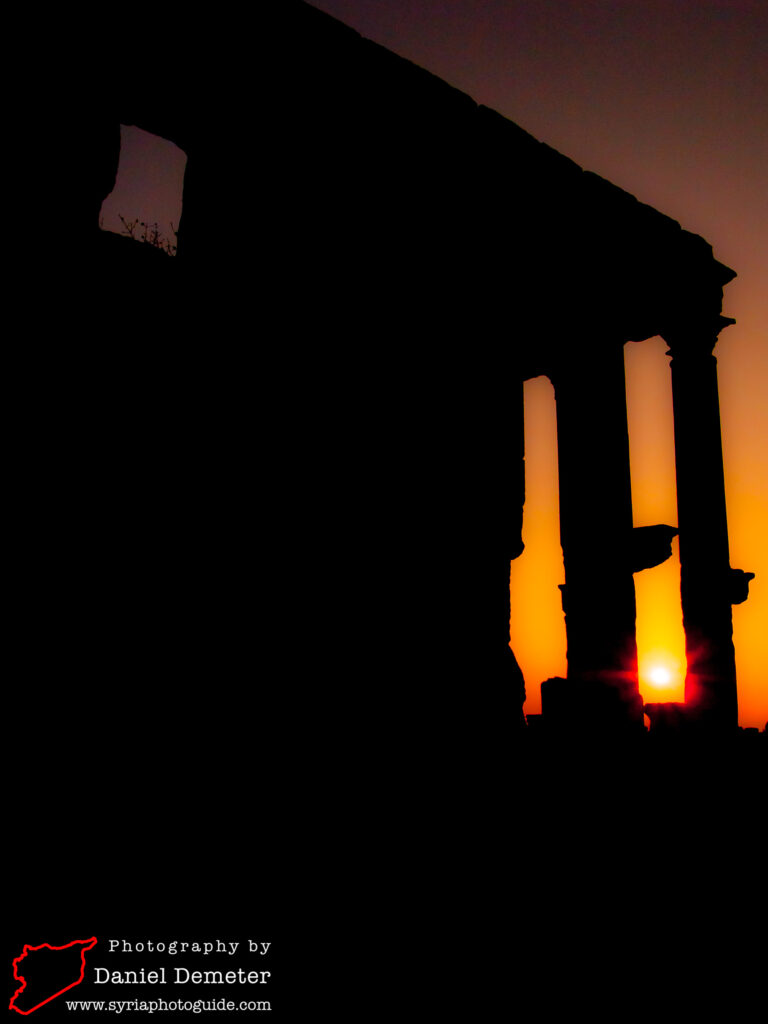
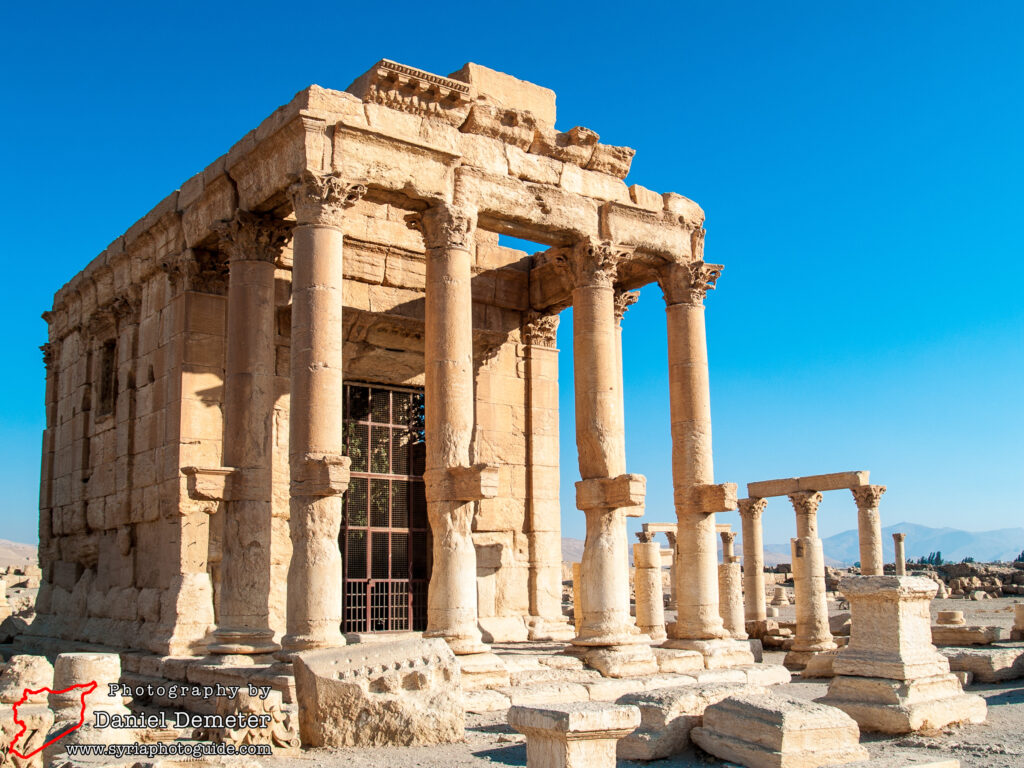
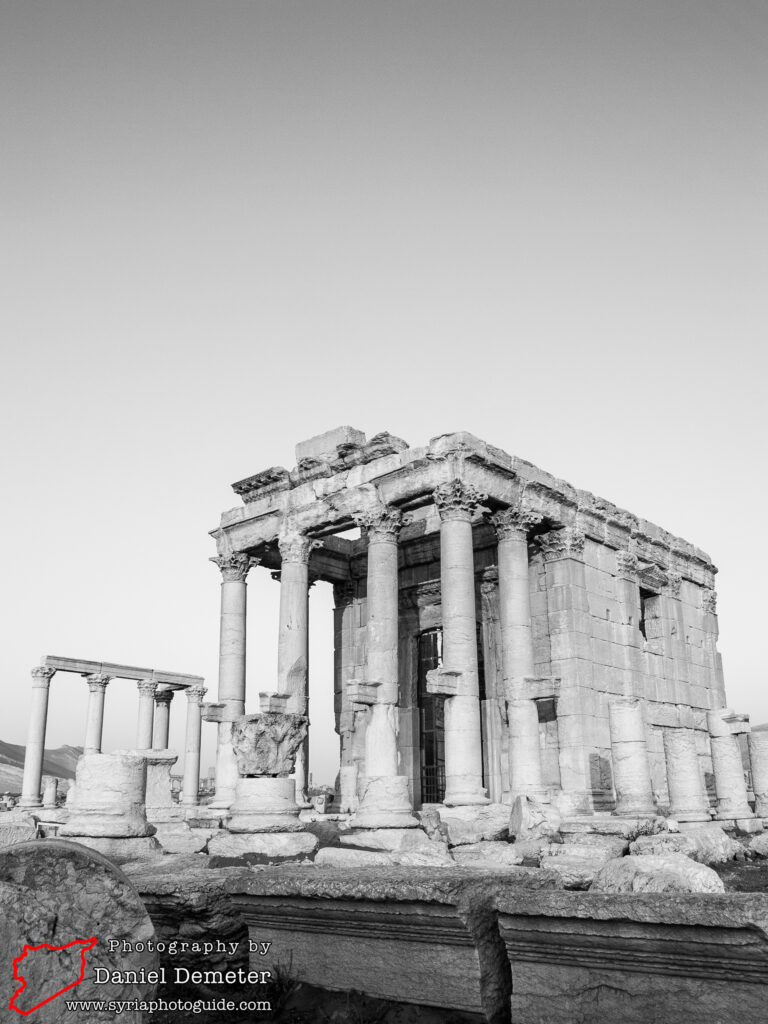
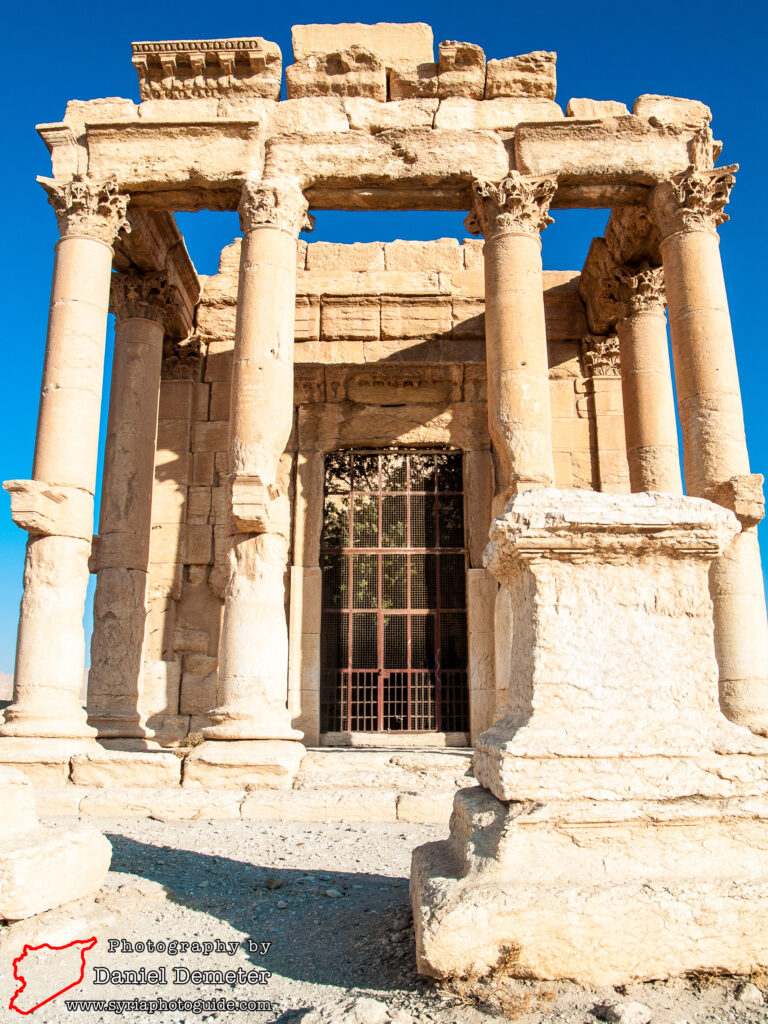
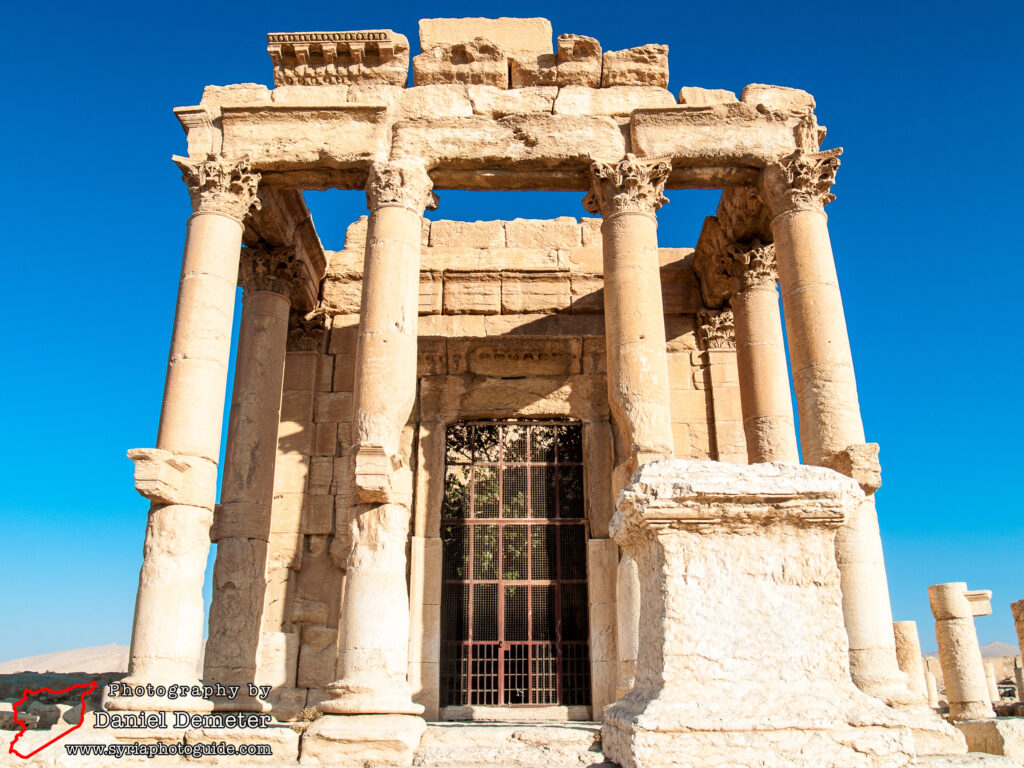
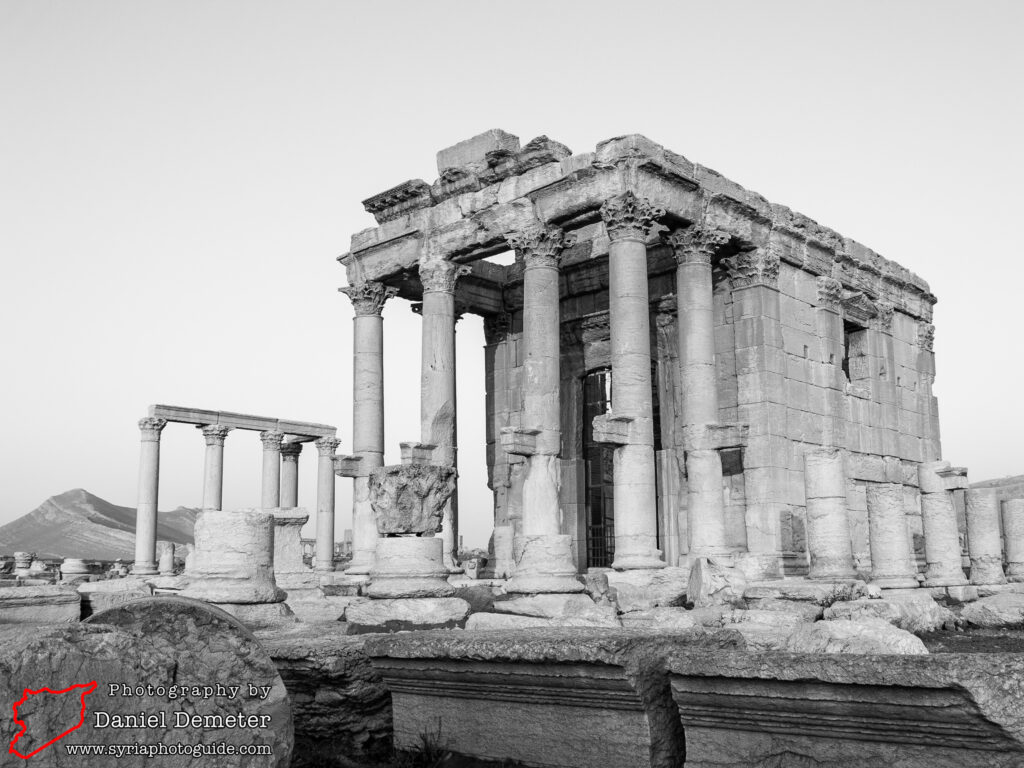
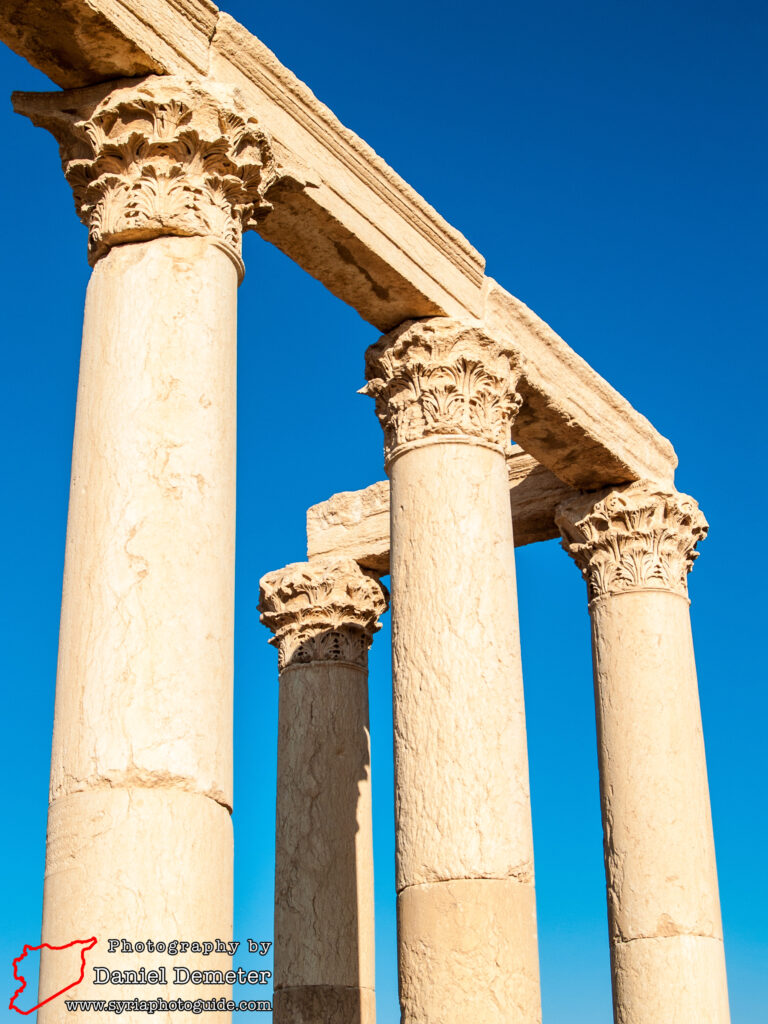
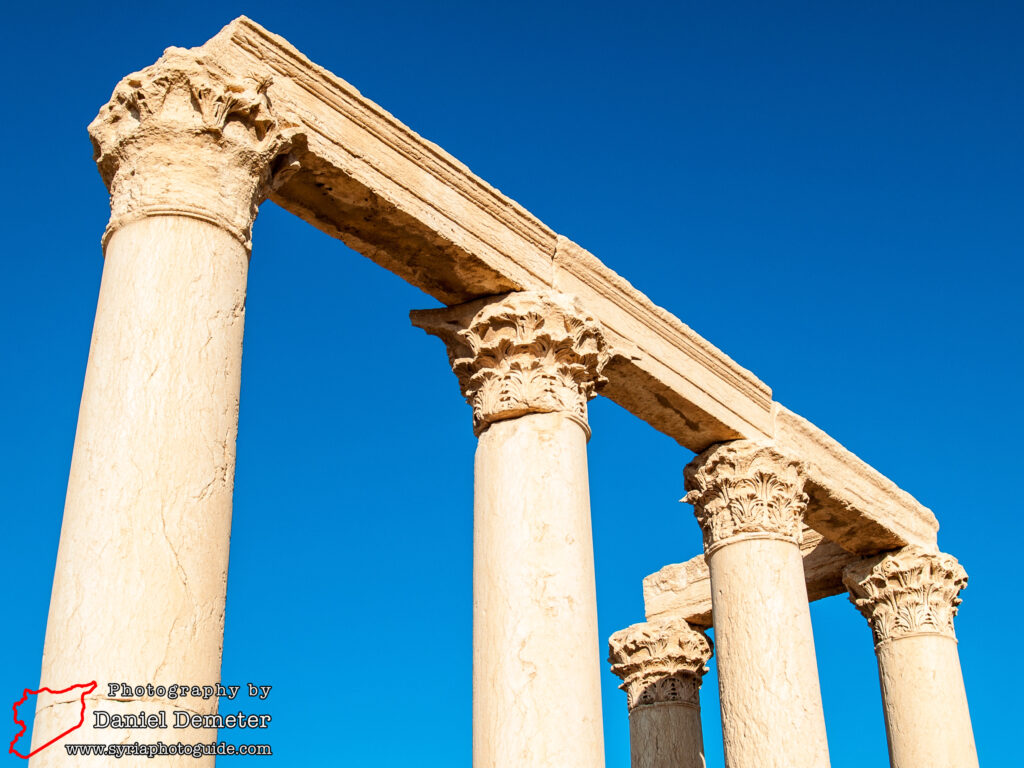
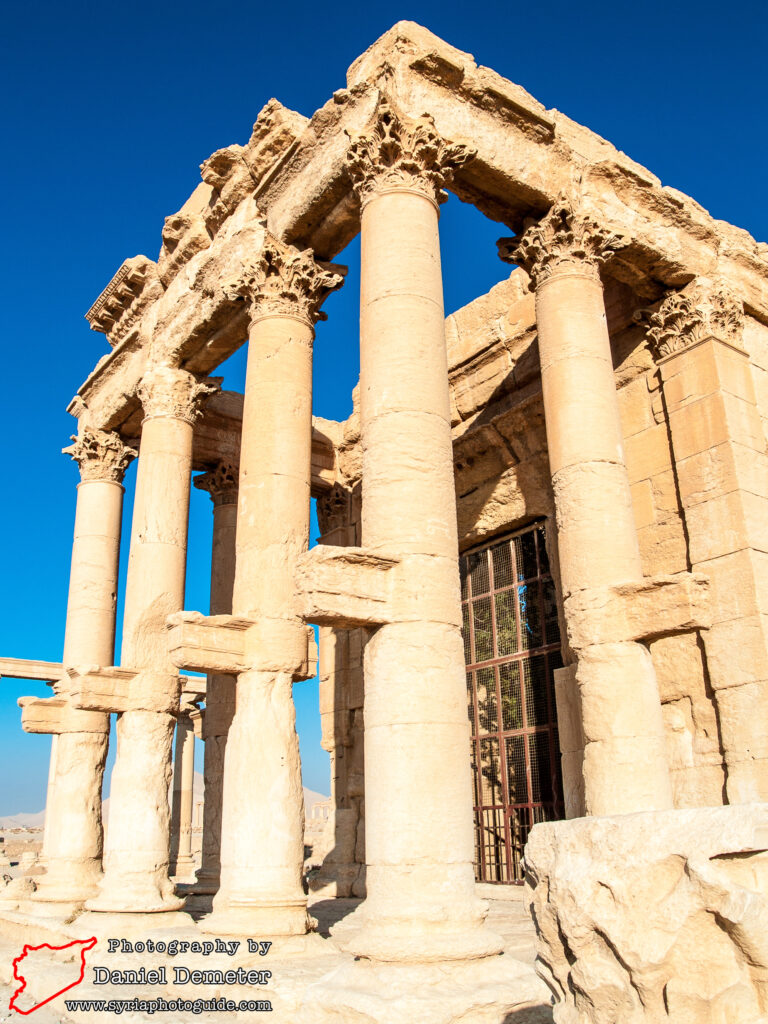
Preservation Status: The archaeological remains of Palmyra (تدمر) are under enormous risk. Since May 2015, the town and environs have been under control of the Islamic State (الدولة الإسلامية) militant group, committed iconoclasts who have purposely targeted archaeological heritage in both Syria and Iraq for destruction. On August 23, 2015, it was reported that the Temple of Baal-Shamin (معبد بعلشمين) was destroyed by explosives, the first structure in the ancient city to be specifically targeted for demolition.
Getting There: Palmyra (تدمر) is located at a major crossroads in the Syrian desert between three major cities. It is located east of Homs (حمص), northeast of Damascus (دمشق) and southwest of Deir al-Zur (دير الزور). Most buses traveling between Homs (حمص) or Damascus (دمشق) and Deir al-Zur (دير الزور) will stop in Palmyra (تدمر). The Temple of Baal-Shamin (معبد بعلشمين) is located in the far north of the acropolis, and is the first temple visible when entering the site from the modern town.
Coordinates: 34°33’12.00″N / 38°16’12.00″E
Transliteration Variants: Tadmur, Tadmour
Rating: 8 / 10
